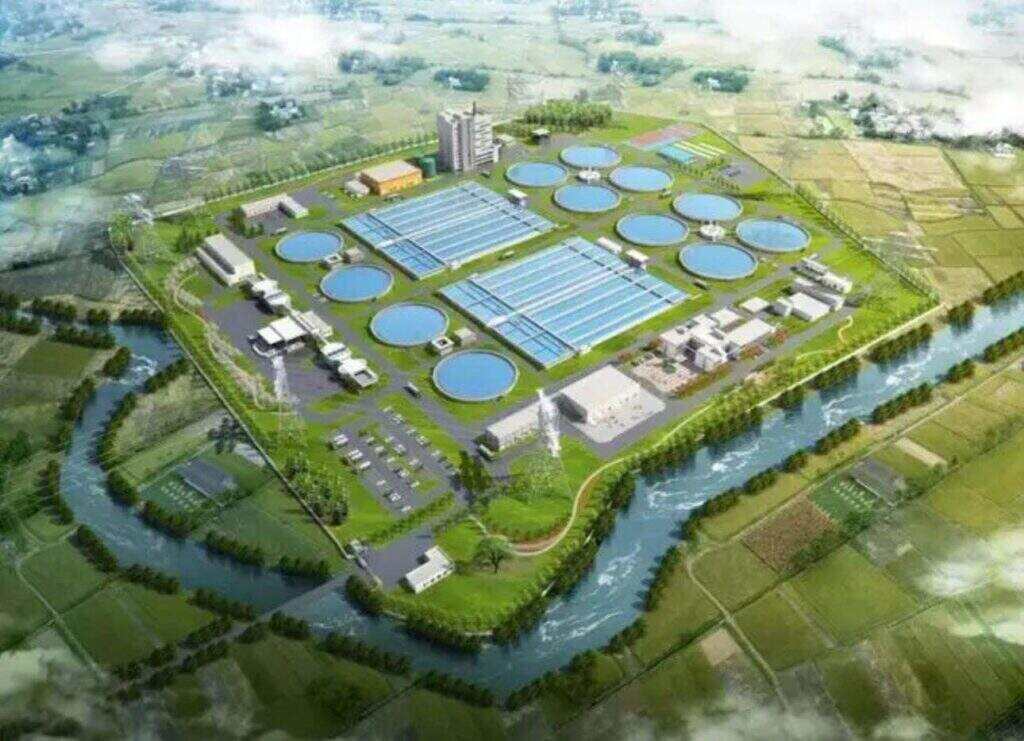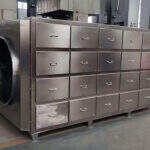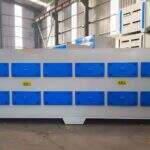With the continuous advancement of urbanization, urban sewage plants have rapidly improved their sewage treatment capacity, and the amount of sludge produced has also gradually increased. Sludge contains a lot of toxic and harmful substances, which can easily cause secondary pollution if not disposed of properly. At the same time, sludge also has high potential utilization value, and turning sludge into treasure is the future development direction of the industry. Therefore, this paper analyzes the sludge disposal and comprehensive utilization of urban sewage treatment plants.
The sludge generated in the process of urban sewage treatment is very unfavorable to the environment. Because the sludge has high organic content and is easy to deteriorate, it contains a large number of parasites and pathogens. harm to the environment. Therefore, the disposal and resource utilization of sludge is an important problem faced by sewage treatment plants.

Composition of Sludge in Urban Sewage Treatment Plant
The sediment produced by sludge in the process of sewage treatment is composed of inorganic particles, colloids, organic substances, bacteria and moisture. The beneficial part is that it contains plant trace elements such as nitrogen, phosphorus and potassium, but there are also harmful and toxic substances that are not easily degradable, such as heavy metals, pathogenic bacteria, parasites, and polychlorinated biphenyls. By analyzing the composition of primary sludge and excess sludge in the urban sewage treatment plant, it is known that the main components of sewage are freshwater compounds, and the proportion of fat and organic matter is low.
Disposal Technology of Sludge in Urban Sewage Treatment Plant
1.High-temperature composting of sludge
Cities are places where the population is relatively concentrated. The industrial and agricultural water and domestic sewage are relatively concentrated, and the amount is also very large. If it is not handled properly, it will inevitably cause serious damage to the environment. The sludge separated from the sewage has a high water content. It has to undergo such treatments as compression, dehydration and drying, and high temperature sterilization. The commonly used methods for sludge treatment and disposal are as follows. Composting is actually the best use of bacteria and fungi in the natural environment. This process is a microbiological process that effectively enables these components to control the refractory organic matter in the sludge and transform them into stable humus-like substances. At present, the methods of high temperature composting of sludge mainly include static composting, dynamic composting, aerobic composting and anaerobic composting.
2.Landfill Disposal
Landfill is the most direct and efficient way to deal with the sludge generated after a large amount of urban sewage treatment. The landfill mentioned here is not directly buried underground. Careful consideration must be given to the surrounding environment, leakage treatment and anti-seepage. First of all, we should dehydrate the sludge, dry it and transport it to a remote area far away from the city. We should choose a place far away from the water source, where the groundwater is scarce and the permeability is low. Then a landfill pit is built, and a high-density polyethylene impermeable layer is used as the bottom layer of the landfill pit. And consider installing a collection device for permeate to prevent contamination to soil and water sources. The advantage of this method is that it is fast, low cost, and the relevant responsible agencies such as the government can save money, but the disadvantage is that there will be fewer and fewer landfill sites, and sludge production will continue. Therefore, it is necessary to consider carefully when choosing, after all, land resources are limited.
3.Incineration
Urban sewage treatment plants should not only consider safety, reasonable cost, no sequelae, but also be efficient and fast. Incineration is a method that can basically meet these requirements at the same time. Incineration treatment can kill the harmful organic substances in the sludge to the greatest extent, and has little impact on the surrounding environment. However, there are still many technical bottlenecks to be overcome in sludge incineration technology. During incineration, the sludge needs to be dewatered and dried.
Urban sewage treatment plants should not only consider safety, reasonable cost, no sequelae, but also be efficient and fast. Incineration is a method that can basically meet these requirements at the same time. Incineration treatment can kill the harmful organic substances in the sludge to the greatest extent, and has little impact on the surrounding environment. However, my country’s sludge incineration technology is still being explored, and there are still many technical bottlenecks to be overcome. During incineration, the sludge needs to be dewatered and dried.
The disadvantages of incineration measures are also obvious, that is, the requirements for equipment are very high, and an incineration plant needs to be specially built near the sewage treatment plant, and the generated smoke and dust will drift with the wind, which will pollute the atmosphere if you are not careful. In addition, it is also a good choice to make building materials. After testing, sludge with less serious pollution and relatively few harmful substances can be placed in hollow bricks after sterilization and high temperature treatment. As a building foundation, exposure to air has little impact.
4.Concentration and dehydration technology
Concentration refers to reducing the water content of the sludge by concentrating and effectively reducing the volume of the sludge. Concentration methods are further divided into mechanical concentration and gravity concentration. Compared with gravity concentration, mechanical concentration has the advantages of saving floor space, low total construction cost, good operating environment, and no occurrence of anaerobic phosphorus in sludge.
Dehydration refers to the treatment method of separating the adsorbed water and capillary water in the sludge and converting it into semi-solid or solid clay. Further dewatering is called sludge drying, and the moisture content of the sludge after drying is less than 1/10. The methods of dehydration are mainly mechanical dehydration, natural drying and granulation. Natural drying method and mechanical dewatering method are suitable for treating sludge in sewage. The granulation method is suitable for the treatment of coagulated and settled sludge. Because the natural drying method requires a long period of time, the mechanical dehydration method is often used in urban sewage treatment plants.
5.Anaerobic digestion of sludge
Anaerobic digestion of sludge refers to the decomposition of organic matter in sludge that can be degraded by microorganisms into carbon dioxide, methane and water by facultative anaerobic bacteria under anaerobic conditions. Biogas is generated to stabilize the state of sludge, which is a common method for reducing and stabilizing sludge. The main advantage of anaerobic digestion technology is that methane can be used to generate electricity, which can effectively reduce the concentration of organic matter in the sludge and reduce the volume of solid sludge. In practical applications, there are also disadvantages such as complicated treatment methods, long anaerobic digestion time, and large floor space. The initial investment and operating costs are high, and it is suitable for large-scale sewage treatment plants with a large amount of sludge.
6.Aerobic Fermentation of Sludg
Aerobic digestion of sludge, also known as aerobic composting, is an endogenous metabolic process in which thermophilic bacteria and aerobic thermophilic bacteria in sludge decompose organic matter, and finally form substances similar to humus soil. Oxygen is charged into the sludge pile by aeration method, and the organism in the activated sludge is oxidized and decomposed by itself, and converted into water, carbon dioxide, ammonia and so on. In the process of organic degradation, heat is generated, resulting in a high temperature in the stacking layer, which can effectively kill microorganisms such as pathogens and parasite eggs, and stabilize the sludge, thereby achieving sludge stabilization, reduction and harmlessness. The aerobic fermentation stage is usually a one-time fermentation, sometimes requiring drying and granulation.
Comprehensive Utilization of Sludge in Urban Sewage Treatment Plant
The principles of “resource-based” urban sludge treatment and disposal projects are “reduction”, “stabilization”, “harmlessization”, and “resource utilization”, which are mainly reflected in: sludge agroforestry utilization, building materials utilization, other comprehensive utilization, etc. .
In a word, the sludge treatment and disposal of the urban sewage plant adopts the principle of “reduction, stabilization, harmlessness, and resource utilization”, and adopts the method of comprehensive utilization. In this way, we can solve the problem of environmental pollution and achieve good results. economic and social benefits.
BIOETP provide service for ETP/STP designing, equipment manufacturing, plant installation, operation training and maintenance service. also provide solutions and equipments for almost all kinds of sludge dewatering treatment. also provide smell control solutions and smell control plant and related equipmentsfor APIs industry and feed processing industry.
So, if you have any ETP/STP , sludge dewatering , smell control requirement aroused, please feel free to contact BIOETP. You can find our contact on BIOETP official website www.bioetp.com.





